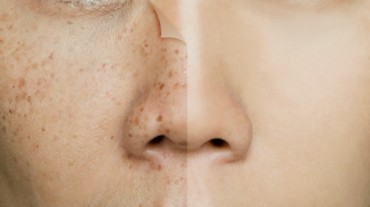
‘Mr Sun, Sun, Mr Golden Sun, Please Shine Down on Me.’ Most of you may recognize these words from a child’s rhyme. It has a beautiful tune and brings out memories of pleasant sunny mornings, beaches, and so on. It has been taught to us right from the time when we were little toddlers that being out in the sun is great for us. And it is partially true that moderate sun exposure is great for health. From being a great source of generating vitamin D in our body, to generate an overall sense of wellness, there is absolutely nothing like the sun. However, long-term sun exposure may do the opposite and cause sun damage on the skin.
We do easily forget that the sun is a very powerful energy source and the energy it delivers in the form of UV rays tends to seriously affect our skin.
Health Shots got in touch with Dr Sejal Saheta, Dermatologist and Veneorologist, InUrSkn, who reveals all you need to know about sun exposure and how it harms the skin.
Well, most people forget that your skin does not just determine how you look. It is the largest organ of the body and the one that acts as the first defender against every single external factor and its health can be seriously compromised by over-exposure to the sun. And the sun’s rays are so damaging to the skin because it consists of UV rays.
“Ultra violet rays are energy rays from the sun which are not visible to us and yet constitute a huge amount of energy that our body is exposed to. UV rays are also of two types – the UVA rays which affect the deeper layers of the skin and the UVB rays which affect the superficial layers of the skin,” says Dr Saheta.
This is the most basic effect in which case the skin develops pigmented patches on the sun exposed areas.
Prolonged exposure to sun often creates itchy red patches on the skin with blistering or peeling of skin.
These are tiny red to brown spots that form on sun exposed areas.

These are brownish patches seen on cheeks, nose and forehead.
Aging of skin is caused by damage or reduction in the collagen and elastin under the skin. This results in fine lines and wrinkles. UV rays directly affect the collagen and elastin levels.
Select Topics of your interest and let us customize your feed.
PERSONALISE NOWAlthough rare, these are seen on the sun exposed area of the skin as tiny red or skin coloured patches.
In this case the blood vessels under the skin become more prominent.
It is seen more in fair skin individuals with a positive family history. Sun exposure is a definite associated cause for the same.
Dr Saheta says, “Well as always prevention is better than cure and hence the focus always needs to be on reducing sun exposure by all possible ways. There is no substitute for the simplicity of covering up your body when out in the sun. Remember the following:”
According to Dr Saheta, “Sunscreens are the best source of protection for exposed areas. Apply sunscreen before leaving home and refresh it every four to five hours if out in the sun continuously. The biggest myth about sun screens is that they are not safe to use on a daily basis. This is incorrect and as a matter of fact they are safe for children too.”
“SPF stands for sun protection factor. It is a measure of protection from UVB rays of the sun. To help you understand this, let us take an example. Say, if your skin gets slightly sunburnt in 10 minutes then a SPF 15 sunscreen will protect your skin for 15 times this duration – that is 150 minutes. But this is true only for laboratory settings – the protection may not last so long in actual use.” Dr Saheta told Health Shots.

There is a common misconception that higher the SPF rating the better the protection. In reality a sunscreen with SPF30 is good enough for most Indian skin tones. However if you spend a better part of the day out in the sun, then I would recommend a sunscreen with SPF50 or higher.
A broad-spectrum sunscreen protects you skin from UVA rays also. UVA rays tend to prematurely age your skin. Look for a PA+++ rating which a lot of reputed sunscreen brands now indicate as a measure of broad spectrum protection.
If you tend to get acne breakouts, make sure that your sunscreen is non-comedogenic. If you want to spend a day at the beach, choose a sunscreen that has water repellent properties.
Dr Saheta advises, “If you find your skin showing any of the effects mentioned above. Please get in touch with a dermatologist. The doctor will treat the sun damaged skin with oral and topical medications.”
Also, it is interesting to note that quite a few signs of sun damage like pigmentation and the unevenness in skin tone can be handled by a trained dermatologist.

One can reverse sun damage with some procedures like:
With proper care and limits, the sun can become your friend and maybe you can carry on singing that favourite rhyme of yours again.